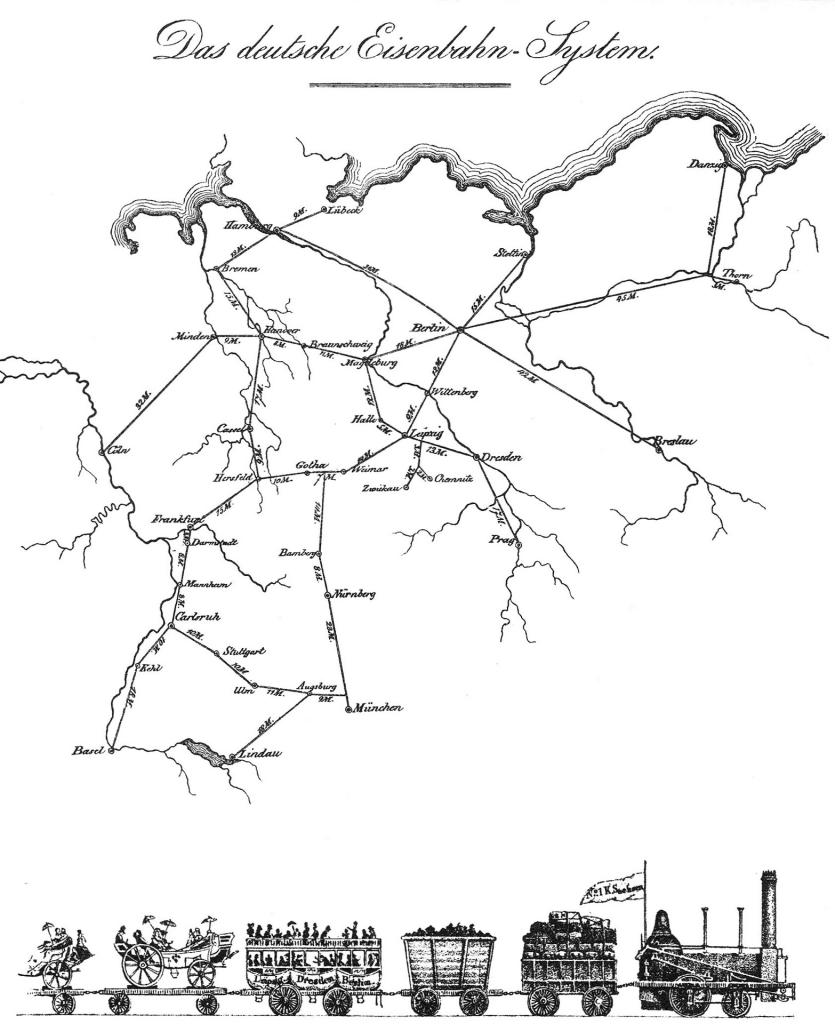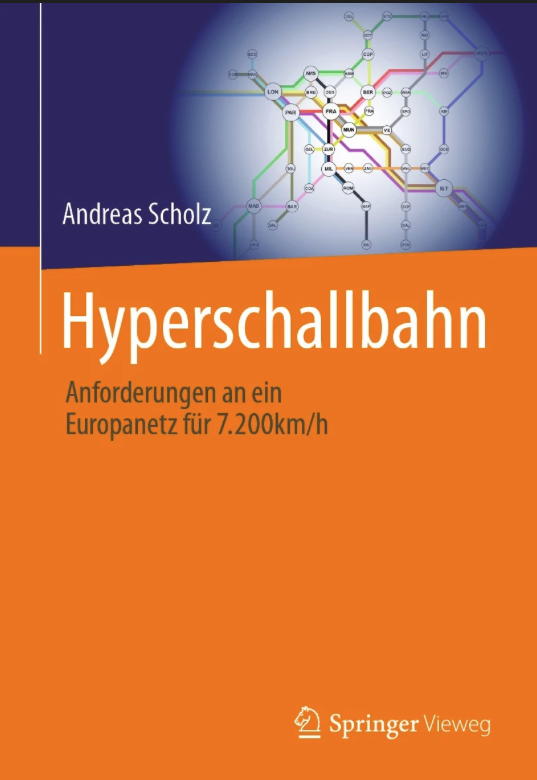Travel around the globe at 7,200 km/h. From London to New York in less than an hour. And all by train, not by plane. This is the proposed concept of the “Hypersonic Train” that German engineer Andreas Scholz describes in his new book “The Hypersonic Railway”.
The Hypersonic Railway System
In this article I would like to introduce you to the fascinating book “The Hypersonic Railway” by Andreas Scholz. He works as a network planner for Deutsche Bahn. Unfortunately, his book is only available in German, so I want to help spread the idea.
The author envisions a global network of railways running at very high speeds. Similar to the idea of the Hyperloop (see my article), the hypersonic railway will run in tunnels in which a vacuum is maintained. The trains will use magnetic levitation technology. This reduces friction with the underground and with the air to a minimum, allowing the trains to travel at a whopping 7,200 km/h. This is many times the speed proposed for the Hyperloop.
Assuming that we can build trains that go that fast, the author develops a global network of lines, but with a focus on Europe. He describes this network in great detail: What destinations should be connected, what capacity is needed, and how can it be achieved?
The maximum speed in his calculations is limited only by the maximum acceleration that people will still find acceptable and the distance between stations.
Mr. Scholz also looks at the economic aspects. He predicts the demand for the hypersonic train by comparing it to the number of passengers carried by airlines today. He clearly positions the hypersonic railroad against the airlines, which will lose a lot of passengers in his projections. However, the airports will not lose all their traffic, as he expects a huge increase in air traffic in general for the coming decades.
Based on these numbers, he calculates the potential number of travelers for the hypersonic train and the revenue that could be generated. And although the cost of building the proposed network will be enormous – several trillion euros – he predicts that the revenues will be even higher, justifying the cost.
The first parts of the network could be ready by 2060, and the entire network by the 2080s.
Comparison
The proposed Hypersonic Railway system will connect major cities within Europe and beyond.
In this network, existing rail lines will serve as feeder lines to the stations of the hypersonic train. In addition, the author proposes some maglev and hyperloop lines, which he believes have potential on medium distances.
The hypersonic railroad would not compete with the existing railroad system, because the high speed leads to longer distances between stations anyway. But it does compete with airlines. It competes both with conventional airplanes that travel below the speed of sound, and with proposed future hypersonic airplanes like the Airbus ZEHST (Link).
Compared to airplanes, the hypersonic train would be much more energy efficient and environmentally friendly. Moreover, the stations could be located within the city centers, or more precisely, under them, while the airports would have to be located outside the cities. If the dream of hypersonic air travel ever comes true, the time it takes to get to the airport will be longer than the time it takes to get to another continent. Therefore, the location within the city centers could be a real advantage for the hypersonic train.
On the other hand, the investment required for a completely new infrastructure is enormous. Who will be willing to invest so much money in an unproven technology? Is it even possible to build all these tunnels across Europe and along the Atlantic? And will the trains be able to go that fast? Right now, teams around the world are struggling to get the Hyperloop up and running at a meager 1,200 km/h – are the high speeds proposed by Mr. Scholz even realistic?
Effects
What if we really built such a network of hypersonic railroads that would make many cities reachable in less than an hour?
I think the hypersonic railroad is the fastest means of traveling across the globe that we will be able to create, unless we find a way to build a transporter (see my article). We cannot go faster than Mr. Scholz’s limit because of the acceleration required to reach such high speeds.
Although travel will still not be instantaneous, it will be so fast that many limitations will be removed. This would be especially true for people who live in a city that is connected to the network. It would be possible for them to commute to another city. Why not live in Frankfurt and work in London? Or Moscow? It would not take much longer than commuting to a nearby city not connected to the network.
All in all, this would make living in big cities even more attractive and thus more expensive. A global elite would flourish because they could afford easy and quick access to all the amenities not only of their own city, but of cities across the continent. Everyone else who does not have such excellent access to this system may feel diminished and like second-class citizens. The divide we see today between rural areas and big cities would become even greater as big cities become more connected.
On the other hand, bringing the centers of Europe closer together could also help bring people closer to each other. After all, the first railroads in Germany helped unite all the different German counties and kingdoms into one nation (see Wikipedia).
Historical Context
Such a proposal for a network of an entirely new transportation technology is, of course, not an entirely new concept. For example, in 1833, the German economist Friedrich List proposed a network of railroads connecting German cities. This was only a few years after the first commercial railroad lines had been opened in England.
Only two years later, the first railroad line was opened in Germany, and by 1846, only 13 years later, the German railroad network had surpassed his original vision (Link).

The first railroads can also be seen as a potential model for financing the hypersonic rail system.
In the 1800s, building new railroads was the most capital-intensive undertaking ever attempted. No individual or company could finance it alone. To raise all the capital, many corporations were formed and issued shares to raise the necessary money. This led to a boom in public companies, which until then had been relatively few, such as the Dutch East India Company.
Perhaps, two hundred years after the first railroad stock market boom, the availability of a new mode of transportation and the prospect of high profits could once again lead to new forms of financing.
Outlook
The idea of a hypersonic rail system is certainly audacious. The benefits are tempting, but the obstacles are enormous, both technically and financially.
Even if Mr. Scholz’s book cannot answer all these questions, it can take credit for systematically describing the network, its dimensions, and its potential impact.
With this book, Andreas Scholz provides a guide for anyone interested in how we might travel in 50 years.
Let’s see if his suggestions prove as prophetic as those of Friedrich List 200 years ago.

One reply on “The Hypersonic Railway System”
[…] his book “Die Hyperschallbahn” (link), author Andreas Scholz presents several means of transportation that travel at hypersonic speeds. […]